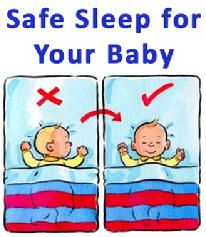
We figured she would stay in that little crib for a few weeks and then we’d get her used to sleeping in her own room. My husband and I had made a beautiful nursery for our little girl, but we also had a bassinet in our room. Little did I know our baby would be co sleeping with us! I had at least done enough research expect to not get a lot of sleep, but I had no idea what reality would be like. There are few things as beautiful as your sleeping baby.Like many first-time parents, I was totally clueless when I came home with my first baby. Once your newborn is sleeping safe and sound, relax and enjoy. If so, ask your child health nurse or doctor about precautions you can take to make this safer. Your newborn may love sleeping in other places, like a baby seat, car seat, swing or baby carrier. This increases the risk of SIDS.īreastfeeding and following the recommended vaccine schedule also reduce the risk of SIDS. Never smoke near your baby or allow others to do so. Studies show that sharing a room, but not a bed, may lower your baby’s risk of SIDS significantly. Place your baby’s cot, co-sleeper or bassinet in your room near your bed. If the dummy falls out when your baby is asleep, you do not need to re-insert it. If you are offering a dummy, do this only at sleep time. It is recommended that breastfed babies should not be given a dummy until breastfeeding is established, usually within four to six weeks. Some parents may want to offer their baby a dummy at sleep time. Some have flaps you can fold over to swaddle your baby’s arms. If you think your baby needs a blanket, try a wearable one. Your baby should not sleep in a hat or bonnet. Your baby should have his face and head uncovered while he’s sleeping. A good rule of thumb is to dress him in the amount of clothing you’d need to be comfortable and then add one layer. Make the room a comfortable temperature and dress your baby for the room temperature. Use a firm, flat mattress with a fitted sheet for your cot or bassinet, and no cot bumpers, blankets, doonas, pillows or toys. If your newborn rolls to his side or tummy by himself, it’s okay, as long as you originally put him to bed on his back. Don’t place rolled blankets, a sleep positioner, or other objects in the cot to keep your baby on his back. It’s a leading cause of death amongst babies from one month to one year old. Put your baby to sleep on his back to reduce the risk of SIDS.
7 safe sleeping practices free#
You stop swaddling once your baby can break free or roll over. This is safe, as long as you swaddle your baby securely, so the blanket doesn’t come loose. Narrator: Many newborns sleep best when swaddled. Miriam Maldonado (Midwife): You put your baby completely flat on their back, with no blankets or any toys in the crib. Midwife Miriam Maldonado teaches parents about safe sleeping practices. Suffocation, entrapment, strangulation and SIDS, or Sudden Infant Death Syndrome, are all dangers you can take action to prevent. But no matter when or where your baby sleeps, you’ll want to make sure he’s safe. In your arms, on the change table, in the car, even during bath time.

Newborns can fall asleep almost anywhere.

Narrator: Your newborn will spend a lot of time sleeping, 16 to 18 hours a day, in short stretches.


 0 kommentar(er)
0 kommentar(er)
